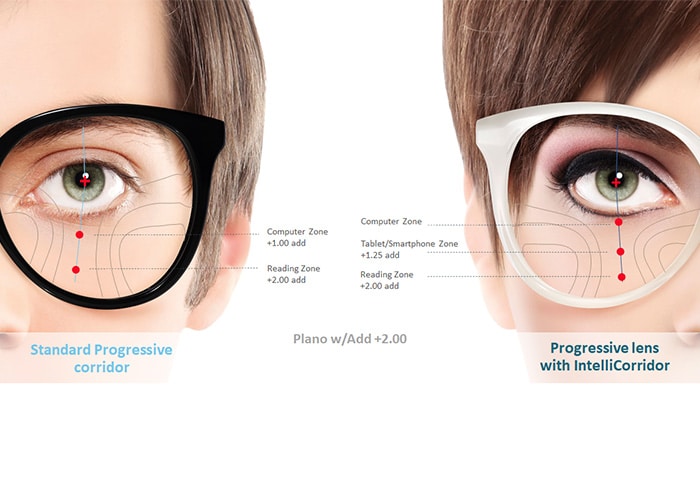
Scientists Develop Contact Lenses That Enable Infrared Vision in Humans
A new era in vision innovation has arrived. Researchers have created a revolutionary contact lens that enables humans to perceive infrared (IR) light—radiation that exists just beyond our natural visual range. By utilizing advanced materials known as upconversion nanoparticles (UCNPs), these lenses convert invisible IR radiation into visible wavelengths, allowing access to a completely new realm of visual data.
The potential applications are extensive: envision recognizing heat signatures, seeing clearly through fog or smoke, or reading concealed messages hidden within fields of invisible light—all without cumbersome goggles or invasive techniques.
The Science Info on Enhanced Vision
Human vision is biologically restricted to the visible light spectrum—roughly 400 to 700 nanometers (nm). However, a significant portion of the sun’s energy is found in infrared wavelengths beyond 700 nm, which renders much of our surroundings unseen to the unaided eye.
A research team spearheaded by scientists from the University of Science and Technology of China has changed this scenario. They designed transparent, wearable contact lenses that embed upconversion nanoparticles within the soft lens material. These nanoparticles capture low-energy infrared light and emit higher-energy visible light, enabling the retina to perceive what typically remains concealed.
In contrast to earlier attempts that necessitated surgically implanting nanoparticles into the eyeball, this breakthrough provides a safe, non-invasive method to achieve IR vision—a vital advancement towards practical application.
Mechanism of the Lenses
Upconversion nanoparticles execute a sophisticated process: they absorb multiple infrared light photons and merge their energies to generate a single photon of visible light. The researchers incorporated three distinct types of UCNPs into the lenses, each specifically designed to respond to particular bands within the near-infrared (NIR) spectrum. These nanoparticles emit red, green, and blue light upon exposure to various IR wavelengths, facilitating full-color vision within the NIR range.
This enables trichromatic IR vision, allowing wearers to identify different “IR colors” based on the emitted visible light. Essentially, users gain the ability to “see” the imperceptible.
Testing and Human Trials
To verify the lenses, the research team initially performed trials on mice. The findings were remarkable: the mice could not only differentiate between IR patterns and respond to flashing signals encoded in infrared light (like Morse code), but they could also perceive IR input even with their eyelids closed—thanks to IR’s enhanced tissue penetration.
Human trials yielded encouraging results as well. Participants using the lenses could:
– Recognize specific IR patterns and blinking codes
– Function effectively in both low-light and daylight conditions
– Differentiate among three distinct infrared wavelengths in “false color”
All while preserving their unaltered natural vision, due to the lens maintaining over 90% transparency in the visible light spectrum.
Performance Highlights
Key performance indicators from the study include:
– Optical transparency: >90% in the visible spectral range
– IR-to-visible light conversion: across several NIR bands simultaneously
– Eyelid penetration: IR light demonstrated 60x greater penetration than visible light
– Nanoparticle concentration: up to 7% by mass without visual distortion
– Resolution: 65 cycles per degree—comparable to human visual resolution
Real-World Applications
The capacity to perceive IR light without bulky goggles could revolutionize various sectors:
– Night Vision: Military and law enforcement uses for navigation and surveillance in low-light environments
– Search & Rescue: Identifying heat signatures through smoke or debris
– Healthcare: Visualizing blood circulation, inflammation, or tissue irregularities in real time
– Infrastructure: Detecting thermal leaks, electrical issues, or overheating machinery
– Communication: Implementing subtle IR-coded signals for visual data transmission or encrypted messaging
Importantly, the lenses function in natural daylight—meaning users won’t need to switch between regular and IR vision.
Future Considerations: Challenges and Further Development
While the lenses are groundbreaking, certain challenges persist. To achieve clear, high-resolution IR imagery, additional optics are still necessary—addressed by the research team with an accompanying wearable eyeglass solution. Upcoming versions may eliminate this need by incorporating embedded micro-optical fibers or next-generation nanoparticles that more precisely direct IR-to-visible emissions.
Another major challenge is detecting passive environmental IR without additional IR light sources. Since UCNPs rely on incoming IR, capturing natural thermal radiation (low-energy far-IR) will necessitate significant progress in nanomaterials and photon capturing techniques.
Transforming Human Awareness
This advancement signifies a pivotal moment in human enhancement. Unlike implants or genetic modifications, these lenses are non-invasive, easy to use, and compatible with existing vision. They embody a future where perception can be broadened safely—where humans can start to experience the world in new wavelengths.
By smoothly melding nanotechnology with human biology, researchers are redefining the essence of sight—and inviting us to envision a reality illuminated not just by visible light, but by the myriad hidden colors of the infrared spectrum.
Currently, infrared contact lenses may